How to get rid of flies?

Flies are carriers of dangerous diseases, and, in principle, they cause a lot of trouble, and therefore the fight against them must take place quickly and efficiently. No less attention should be paid to the implementation of preventive measures.

Where do they come from?
In fact, flies appear in a private home for many reasons. With the arrival of the spring heat and the warming of the air above 10-12 degrees, those individuals that took refuge in the room before wintering wake up and fly out in search of food. Since they, due to the peculiarities of vision, do not always manage to leave the house, many remain in an enclosed space and begin to multiply. Flies for laying eggs are especially attracted to food and trash cans, so their presence in the apartment only contributes to the reproduction of pests.

It should also be mentioned that they like animal excrement no less, so if cleaning is rarely done in a chicken coop or shed with pigs, then you should not be surprised at the problems that arise.
Quite often, flying pests enter the living space with spoiled food.... For example, such a situation can arise if the gardener did not sort out the harvest, and rotten ones got into the house along with good fruits. There are always a lot of insects observed in unsanitary conditions - the presence of uncontrollably growing dumps and compost heaps near the house will certainly lead to attacks by flying "enemies". The same can be said for non-emptied cat litter boxes and bins. On the veranda or in the gazebo, flies can start due to regularly left food, in the garage - due to high humidity, and under the canopy - due to the abandonment of rotting fruits.
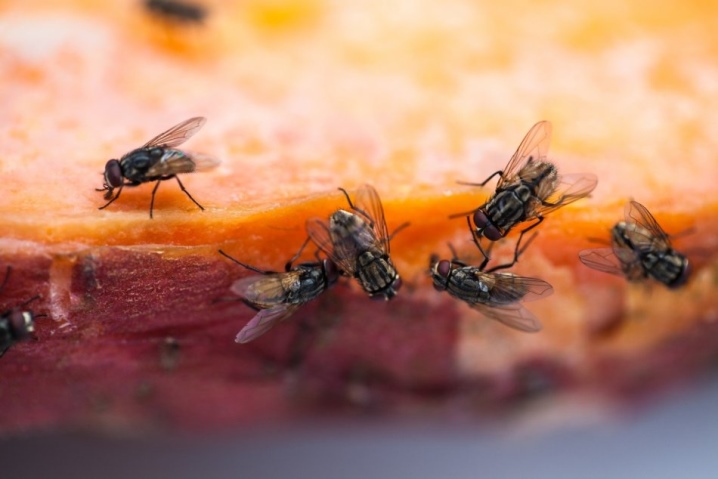
Why are they dangerous?
For many people, a fly is just a source of constant discomfort caused by constant buzzing and flickering in space. However, a much greater danger lies in the fact that the villi on their paws are capable of carrying various kinds of bacteria and microbes. Failure to take timely measures leads to the appearance of conjunctivitis, diarrhea, dysentery in the home space, as well as such dangerous diseases as cholera, anthrax, tuberculosis and typhoid fever.
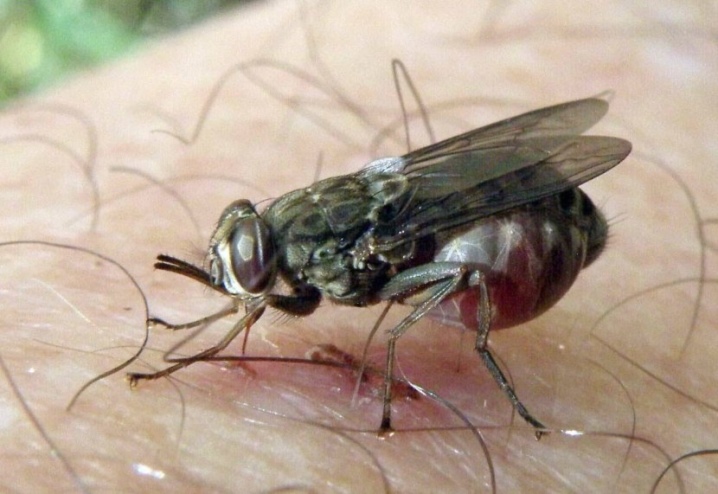
It is worth clarifying right away that different flies are responsible for different diseases: for example, those that come into contact with waste spread intestinal infections, and individuals sucking blood provoke anthrax or tularemia infection.
Often the activity of insects leads to the fact that the eggs of worms enter the human body. If the larvae find themselves on a wound covered with a mucous membrane, then they are even capable of destroying tissue. The most common indoor or house representatives of the world of gray insects with longitudinal black stripes painfully bite a person, secreting saliva with a special secret. Hematophages, the best known of which are horseflies, also feed on blood and carry infections found in mammalian feces.
The meat fly is especially dangerous, whose larvae parasitize in the skin of animals and even humans, causing a disease such as myiasis. Pieces of food containing eggs or maggots, ending up in the stomach, can provoke eating disorders.
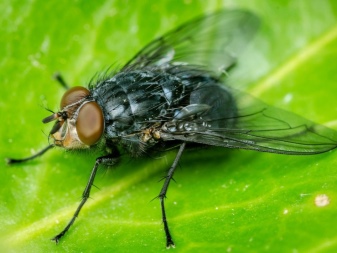

Insects inflict tangible harm on pets and even plants. - so, lily fly larvae eat pistils and stamens of the corresponding flowers.The larvae of flower flies, getting into the soil, significantly harm the condition of the root system.
Traditional methods
Most popular methods cannot be called fly killers, but they quickly and effectively drive them away from living spaces. Alternatively, a mixture of 3 tablespoons of milk, 0.5 teaspoon of formalin and 5 teaspoons of soda, placed near the window openings, receives good reviews. Helps in the fight and paper soaked in milk with black pepper.
Vodka
Even vodka surprisingly repels pests. The liquid, which can be an alternative to alcohol, is simply sprayed around the room. It is worth mentioning that a small amount of kerosene or turpentine will also help to cope with the problem. These compounds are added to the water used for wet cleaning the apartment.
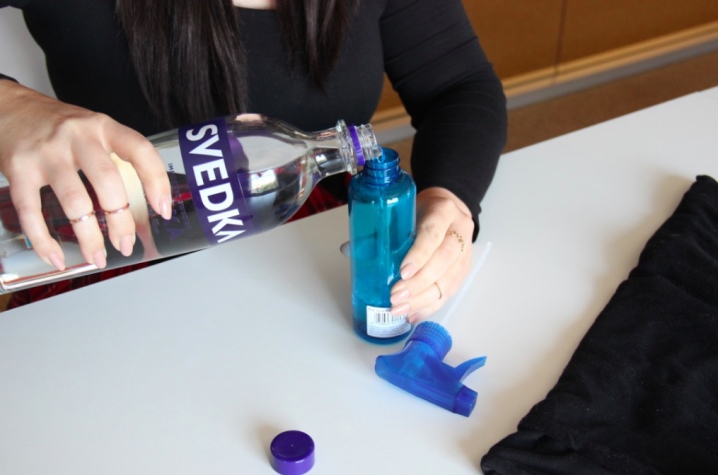
Essential oils
Since insects with a delicate scent are afraid of pungent odors, a variety of essential oils are often used to drive them out. A big plus is that a person may not even smell the product with a low concentration, but the pest will identify it and leave the room. In addition, you can make a nice-smelling mixture and thus further provide your home with a natural flavor. Effective repellents include essential oils of citrus, eucalyptus, lavender and various types of mint. It will be most convenient to use an aroma lamp, the effect of which extends to the entire room, including hard-to-reach places.
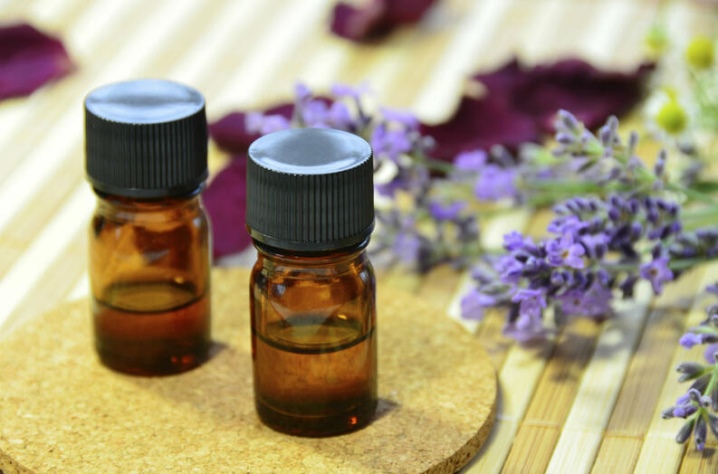
Additionally, oil substances are used to coat window and door openings in a private house.
Carnation
By itself, the clove has a rich smell, therefore, it will be enough just to scatter the buds into bowls and place them in the most attacked places... Lemon will enhance its effect. In this case, about 10 cloves are stuck into the citrus half, and the effective flavor is left on the table.
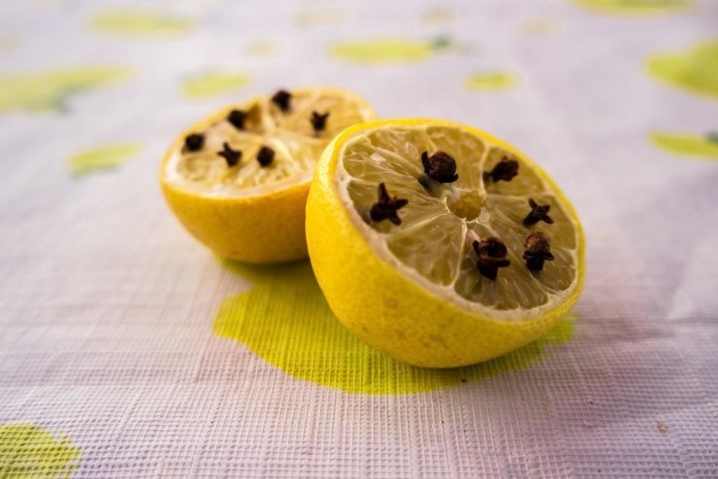
Basically, a large number of plants successfully fight these common pests. Onion juice is suitable for processing window and doorways, and bay leaves in any condition are laid out around the apartment. Mint and basil, together with lavender, are suitable for creating sachets - at the same time they will scare away flies and fill the apartment with unique aromas. Hanging small bunches of tansy around the rooms also gives good results.
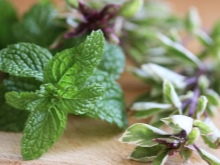
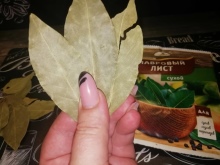
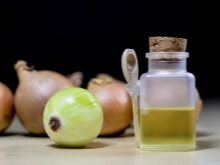
Mechanical methods
The destruction of flies is carried out in several mechanical ways.
Fumigators
Fumigators are absolutely safe for both people and pets, but they are very effective. Their significant advantage is the ability to work without the appearance of odor. Devices purchased in specialty stores are supplied with plates or special fluid. When an insect appears in an apartment, the device is connected to the network, a replaceable cartridge soaked in fumigants heats up and begins to evaporate substances toxic to a fly.
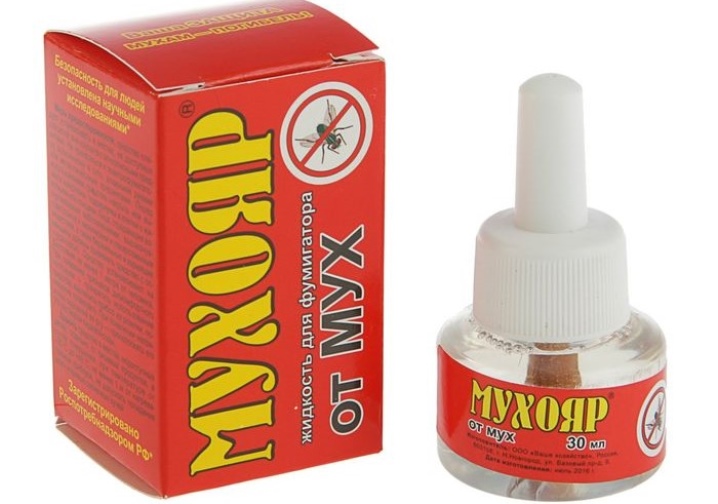
Traps
Pest traps are very popular with homeowners, as they not only allow you to collect all individuals in one place, but also easily remove them from the room.... The essence of the structures is that they consist of a treat, to which insects flock, and a kind of device that does not allow them to free themselves. It is customary to deal with the problem using three types of devices: cans or bottles, stickies and electric shocks, and all of them are easily created independently.
The first one is the easiest to do: at the bottom of the container, a "treat" is placed that can attract an insect, and the diameter of the neck decreases. So, it is proposed to place a paper funnel in the jar, the cone of which looks down, or the plastic bottle is covered with an inverted neck.
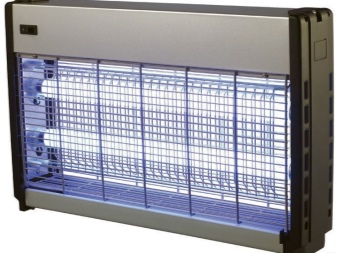

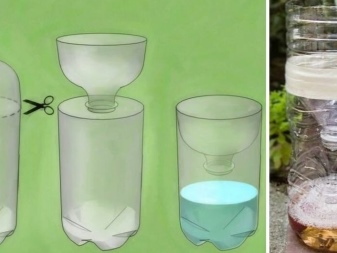
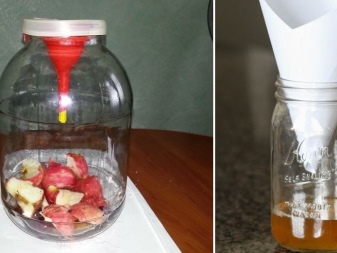
You can also tighten the neck of the container with several holes of cling film. Of the baits, flying creatures most often "bite" on sugar syrup with vinegar, jam, a mixture of water with honey, granulated sugar and yeast, or spoiled food. It is also customary to create Velcro tapes on their own: a dense, non-soaking piece of paper is cut into strips, smeared with a sticky substance and fixed in places where "enemies" are spread. It is proposed to cover the surface of the workpiece with thick sugar syrup, double-sided tape, or a combination of a couple of tablespoons of castor oil and 1 tablespoon of liquid rosin.

If there is nowhere to hang the tape in the room, then it is better to apply the sticky substance to the outside of the glass, inside which the flashlight is installed.
Finally, the electroshock trap is popular. For its independent design, an energy-saving light bulb is rewound with aluminum wire connected to an electricity source. Insects attracted by the light are exposed to the electric current and die.
Chemicals
In some cases, it is simply impossible to kill flies without the use of chemicals. It is allowed to use both insecticides that kill insects and repellents that repel them. Aerosols are often used in a wooden house: Dichlorvos neo, Raptor, Karbofos, Varan and others. For greater efficiency spray is applied twice (with a two-week break).
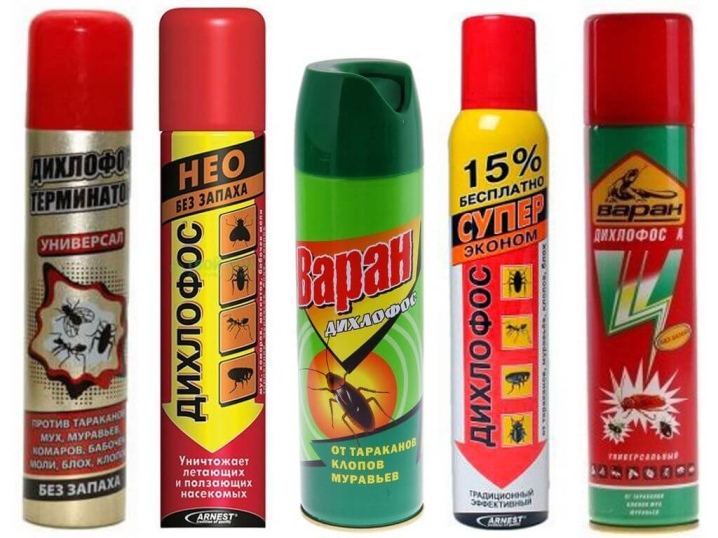
Capsules and powders that need to be diluted with water successfully cope with the processing of large rooms. For example, we are talking about "Agite", affecting the nervous system of creatures and causing their death within 5-10 minutes. It is also possible to poison flies with the help of the Flybyte preparation: yellowish granules can simply crumble in the most problematic areas or, diluted with water, are used for spraying.

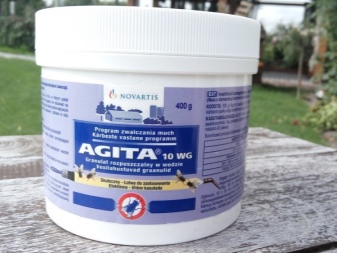
A wide range is presented by the professional brand "Mukhoyar" offering, in addition to aerosols and adhesive tapes, insecticidal bombs and gel. A poison called "Minap 22", which is a whitish, odorless liquid that can eliminate the problem in almost one day. It is worth mentioning that when resting in nature, it is customary to scare away flying creatures with the help of special checkers, sticks and bracelets, as well as covering the skin with repellents in the form of sprays or ointments. To drive away pests from cows is most efficiently obtained by spraying in their habitats Flybyte and Agituand hanging adhesive tapes from the ceiling.
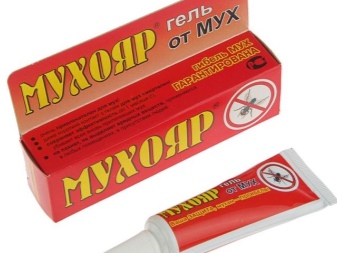

Preventive measures
Despite the fact that getting rid of flies in the house is quite possible, timely prevention is still the best protection against these pests. The house must always be kept clean, with special attention paid to the kitchen. It is important to avoid clumping crumbs and food debris on the table or floor, piles of dirty dishes with food debris in the sink, and overfilled trash bags. It should also be remembered that spoiled foods, as well as high humidity, are very popular with flying insects.

In general, any food waste should be sent immediately to a hermetically sealed trash bin, which is emptied regularly. It is customary to store half-eaten food in closed containers or simply in the refrigerator.
Of course, it is important to periodically arrange cleaning in the home: both dry and wet... It is recommended to wipe off sink drains immediately after stopping the water supply. It is worth planting geraniums right on the windowsill, and use the leaves of wormwood and tomato to form a frightening bouquet. It will be useful to protect all entrances, as well as ventilation openings with a mosquito net. Since flies cannot tolerate drafts, the warm season should be accompanied by regular ventilation. Insects tend to grow their offspring in the ground of indoor plantings, so it will be useful to clean or even change the upper part of the soil mixture.

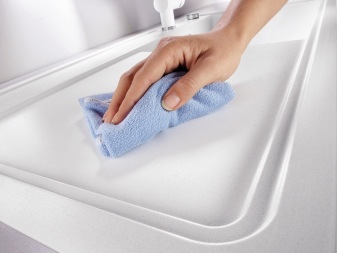
The owners of private houses and summer cottages will need to especially carefully monitor the cleanliness of toilets located in separate buildings. In order to avoid the spread of flies, it will be necessary to thoroughly clean the premises in which livestock live: a cowshed, a chicken coop or a pigsty. Compost heaps or landfills should not be planned near the house, as flies will very quickly move from them to the living area. Of course, places where water stagnates must be carefully monitored. A plus will be planting under the windows of plants, the aroma of which scares away insects: wormwood, elderberry, geranium or bird cherry. With regard to basements and attics, it is necessary to check from time to time to ensure that the fruits stored there do not start to rot.


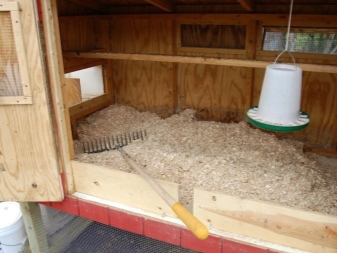
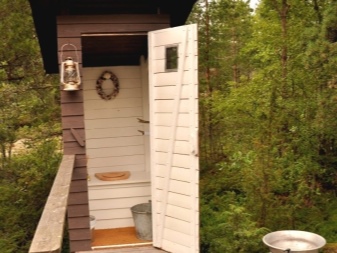
It is also a good idea to regularly inspect these areas during the winter for sleeping individuals.













The comment was sent successfully.